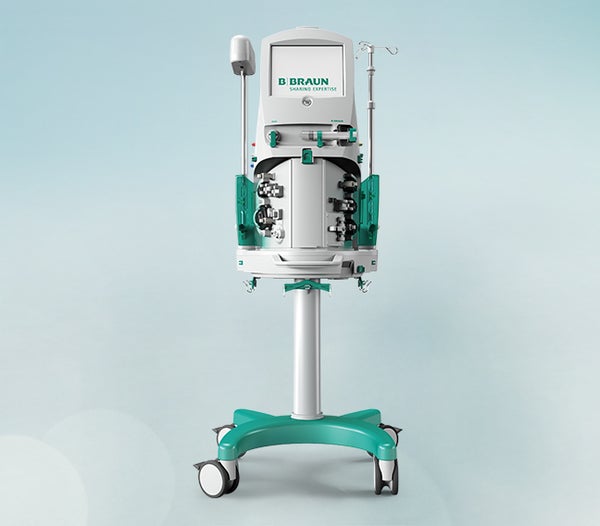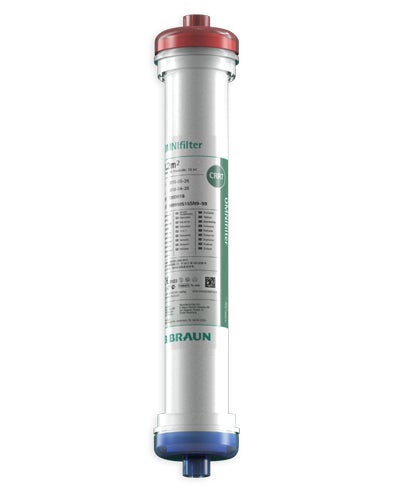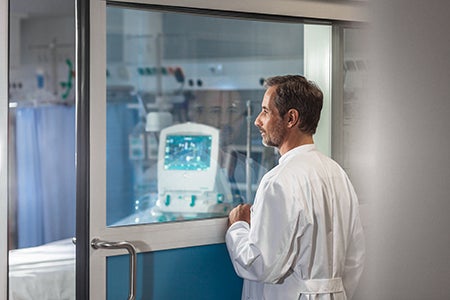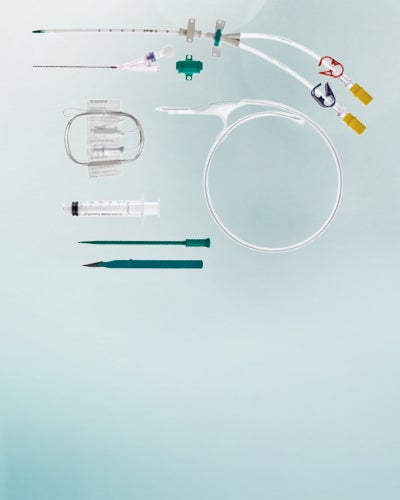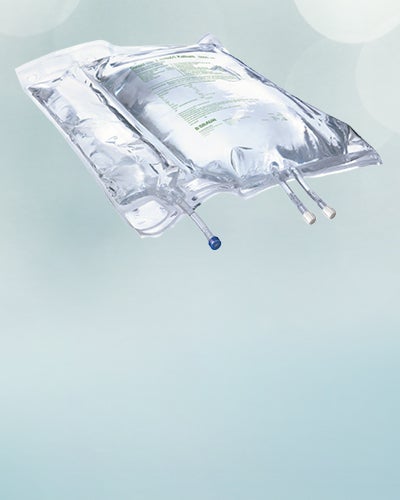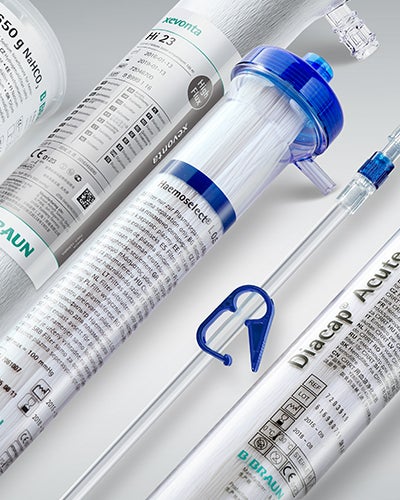Acute Blood Purification Advanced Technologies
Choose a category or subcategory
Expert in intensive care - CRRT Goals
About 250 cases of acute kidney failure occur per million individuals annually. Up to 25% of the patients at intensive care units and up to 4% of hospital patients in general are affected. In most cases, acute kidney failure is the result of serious underlying illness. In recent years, the incidence of acute kidney failures has risen by more than 10% annually, especially among people over 60. The reason for this is the increasingly complex surgeries performed on elderly patients who usually suffer from secondary cardiological disorders.
Acute blood purification
What is Acute Blood Purification?
Acute Blood Purification encompasses all extracorporeal techniques used to treat acute kidney failure. Employed most frequently are continuous techniques, preferably lasting 24 hours in order to ensure a gentle removal of excess body water and uremic toxins.
The following techniques are available:
CVVH (Continuous Veno-Venous Hemofiltration)
CVVHD (Continuous Veno-Venous Hemodialysis)
CVVHDF (Continuous Veno-Venous Hemodiafiltration)
and CVVHFD (Continuous Veno-Venous High-flux Dialysis).
These therapies are also grouped under the general term CRRT. (Continuous Renal Replacement Therapies) Intermittent techniques may also be employed. Used as part of chronic dialysis too, such techniques are applied over a defined time period.
When is Acute Blood Purification applied?
Acute Blood Purification is used when renal functions have been severely impaired as a consequence of a serious illness such as circulatory collapse or sepsis. This applies mainly to intensive care patients. Such patients suffer from excess body water and an accumulation of uremic toxins. If acute kidney failure can no longer be treated with medication, Extracorporeal Treatment is needed. Acute kidney failure is usually reversible, thus necessitating Acute Blood Purification only over a defined time period.
What causes acute kidney failure?
Acute kidney failure can have a variety of causes differing in terms of location. Causes can be perenal e.g. circulatory shock, intarenal e.g. inflammation, diabetes, high blood pressure, or postrenal e.g. blockage of urinary channels through kidney stones. In the event of acute kidney failure, renal functions deteriorate rapidly. The most common causes of acute kidney failure are prerenal. Acute kidney failure usually occurs in patients undergoing intensive care for disorders of the liver, heart, lungs or other organs (multi-organ failure).
What is acute kidney failure?
Acute kidney failure is a sudden and persistent, but basically reversible deterioration in renal functions. It typically occurs in 4 phases:
1. Damage (occurring over a few minutes to several days) resulting in a sharp drop in urine discharge and rise in the proportion of substances in blood which need to be excreted via urine (creatinine, urea).
2. Oliguria/anuria (lasting up to 10 weeks). In this phase, the patient discharges very little (oliguria < 500 ml/d) or no urine (anuria <100 ml/d).
3. Polyuria (1-2 weeks) involving a notable resurgence in urine production (> 2000 ml/d).
4. Restoration (after several months).
What are the potential repercussions of acute kidney failure?
Though the chances of restoring renal functions are high, the mortality rates of such usually gravely ill patients at intensive care wards lie between 50% and 70%. These patients frequently expire due to other complications, e.g. multiple organ failure or infection (pneumonia, sepsis). Furthermore, acute kidney failure can lead to chronic renal insufficiency requiring dialysis (in roughly 5% of cases).


